In photos: Magenta Foundation, climate change
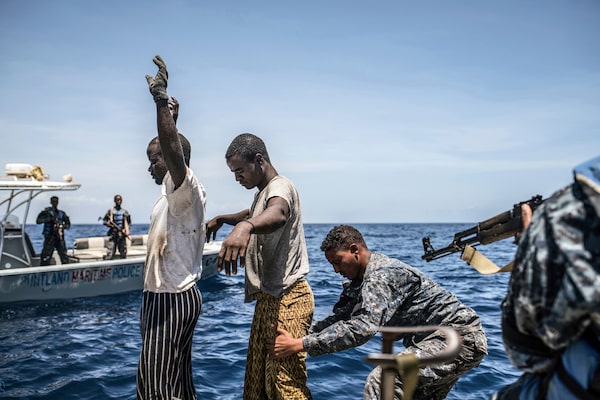
The Puntland Maritime Police Force (PMPF) search a fishing boat for arms while on patrol off the coast of Bosaso, the largest city in Puntland, on May 15, 2016.Nichole Sobecki/Magenta Foundation
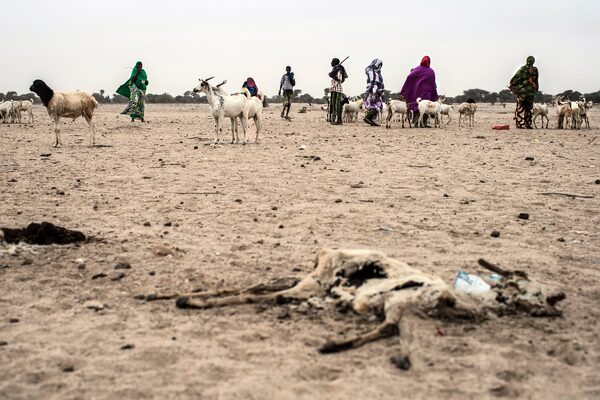
The bodies of sheep and goats that died due to the severe drought in Somaliland lie where they fell in an animal market outside Geerisa, one of the epicenters of the crisis, on April 7, 2017.Nichole Sobecki

Fishermen untangle their nets in the port of Bosaso, the largest city in Puntland, on May 14, 2016.Nichole Sobecki
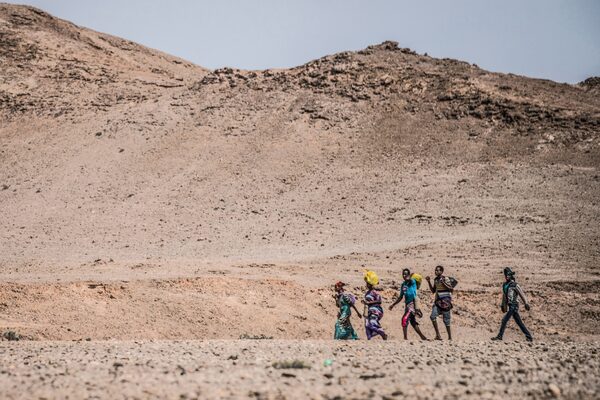
In the arid lands outside Mareero, a smuggling hub in the semi-autonomous region of Puntland, Somali and Ethiopian migrants walk to caves where they will wait for the dhow boats that will carry them on the perilous journey across the Gulf of Aden to Yemen, and eventually Saudi Arabia and Gulf States, on May 15, 2016.Nichole Sobecki

Daud Mohamed (45), father of nine, tries to move the bones of one of his cows off the path near his home in Somaliland on April 5, 2016. Most of Daud's livestock died amidst a severe drought that swept across the region in the spring of 2016, leaving 1.7 million people in need of aid, according to the United Nations.Nichole Sobecki

A woman walks through a cactus field in a drought-stricken area of western Somaliland, a semi-autonomous region in the north of Somalia, on April 6, 2016.Nichole Sobecki
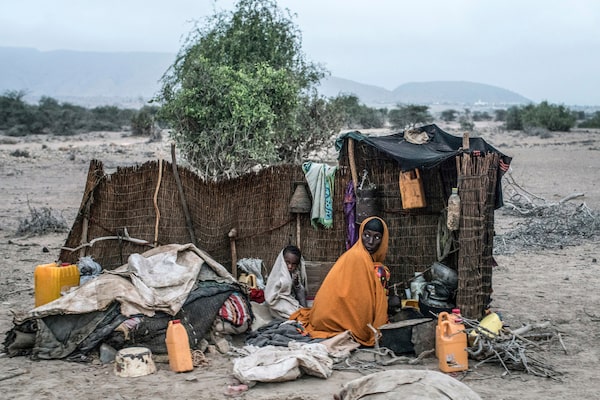
Forced to travel far beyond their traditional nomadic routes because of drought, Muumina Farah and her daughter camp by the side of the road outside the western Somaliland town of Habas on April 6, 2016. Their male relatives remained behind in northern Somaliland with the family’s surviving animals in a desperate attempt to save what was left of their herd.Nichole Sobecki

Somalia’s arid landscape as seen from inside a decaying colonial building in the Somaliland town of Sheikh on April 12, 2016.Nichole Sobecki
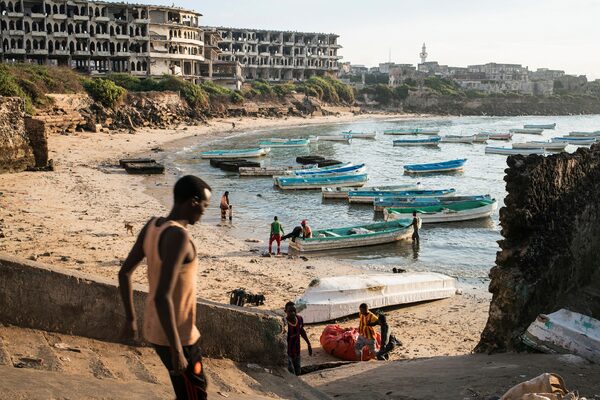
Boats gather at dawn in the old port in Mogadishu, the Somali capital, as fishermen land their catch and ready it for transport to the city’s fish market on May 2, 2016.Nichole Sobecki
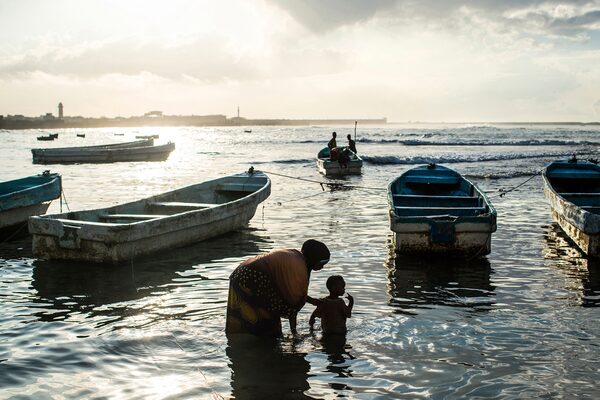
A mother bathes her young son in the port of Mogadishu on May 2, 2016. Somalia has never been a forgiving place. A land of extreme temperatures and little rain, the country has faced cyclical droughts and periodic famines throughout the past century. But decades of civil war, coupled with the effects of climate change, have set the country on a path to environmental disaster. Home to a bloody Islamist insurgency that is arguably the world’s first climate war, Somalia is grappling with rapid desertification, increasingly erratic rainfall, and the destruction of coastal waters by foreign fishing fleets. “With this weather pattern, Somalia or Somalis will not survive,” says Fatima Jibrell, a Somali-American environmental activist. “Maybe the land, a piece of desert called Somalia, will exist on the map of the world, but Somalis cannot survive.”Nichole Sobecki